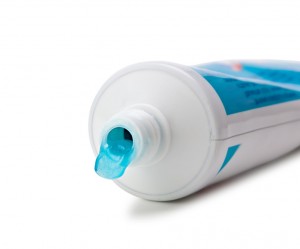 As Woody Allen says, “Everything our parents say is good is bad. Sun, milk, red meat, college…” Now, many dentists are adding toothpaste to the list. Recent articles bashing toothpaste have littered the blogosphere, and now many consumers question the necessity of the stuff. So, what’s the deal? Is toothpaste really necessary, or have we all been duped by a mass conspiracy involving our parents, the Tooth Fairy, and Colgate stockholders?
As Woody Allen says, “Everything our parents say is good is bad. Sun, milk, red meat, college…” Now, many dentists are adding toothpaste to the list. Recent articles bashing toothpaste have littered the blogosphere, and now many consumers question the necessity of the stuff. So, what’s the deal? Is toothpaste really necessary, or have we all been duped by a mass conspiracy involving our parents, the Tooth Fairy, and Colgate stockholders?
Toothpaste goes way back. In fact, Egyptians used toothpaste in 5000 BC, before the toothbrush was even invented! Even in ancient times, people were concerned with fresh breath, white teeth, and healthy gums. Ingredients like crushed bones and oyster shells, salt and herbal mints helped remove debris and leave a fresh-smelling aroma. Modern toothpastes have continued the trend, adding ingredients to help curb decay and whiten teeth to the max. Common ingredients in modern toothpastes include:
- Humectants: Moisturizing agents such as glycerine, sorbitol, and water prevent your toothpaste from turning to dust after you buy it.
- Abrasives: To remove stains and plaque, toothpastes contain gritty substances such as calcium phosphates, alumina, calcium carbonate, and silica.
- Fluoride: Proven to remineralize tooth surfaces, fluoride provides decay-fighting power that most dentists agree is essential.
- Detergents: Many toothpastes contain detergents to create that refreshing foaming action.
- Flavoring Agents: Peppermint, cinnamon, citrus, even chocolate… toothpaste without it would feel more like a punishment.
- Preservatives, Dyes, and Sweeteners: Trace amounts of each give modern toothpastes lasting appeal.
So, where’s the conflict? If toothpaste has been used since ancient times, and all the ingredients are legitimate, then why should I worry? A few causes for controversy have cropped up.
First under the microscope: fluoride. While proven essential to preventing cavities in small doses, when ingested, fluoride can have harmful effects. Children are especially prone to swallowing toothpaste, which can cause permanent staining (fluorosis). Most dentists agree that fluoridated toothpaste provides essential protection for both children and adults; however, many Americans tend to go overboard—loading their toothbrush with inch-long worms of toothpaste. Using only a PEA-sized drop of toothpaste will prevent over-exposure.
Next on the agenda: abrasives. In today’s culture, the whiter the teeth the better! Well, toothpaste companies have delivered the goods—often chalking their products with harsh abrasives that can actually damage tooth enamel. Combined with consumers who brush harder and more frequent than ever, the result can cause increased tooth sensitivity and small scratches that actually attract more stains. The lesson here? Brush with a soft toothbrush, brush gently, and be wary of toothpastes that advertise extreme whitening. The ADA seal of approval tells you whether the paste has been tested for safety and effectiveness.
In addition to their cavity-fighting powers, delicious toothpastes give children and adults an incentive to brush. Just be careful that that incentive doesn’t spur any toothpaste-eating addictions, and when in doubt, consult your dentist about the right toothpaste for your lifestyle. Everyone has different oral health needs, and your dentist or hygienist will steer you in the right direction for a bright, healthy, and conscientious smile.